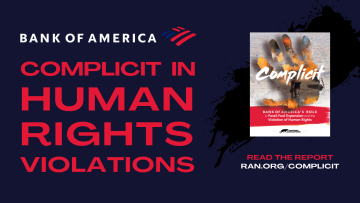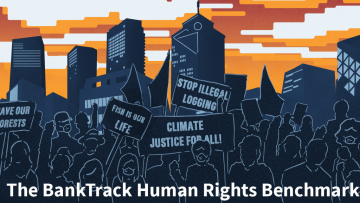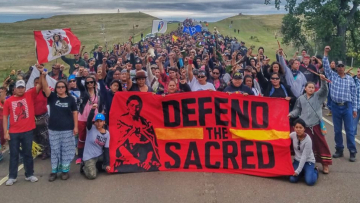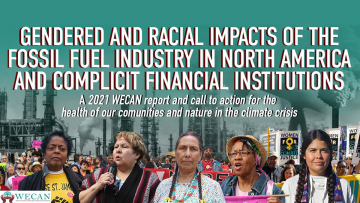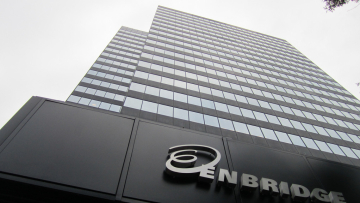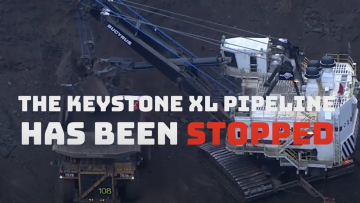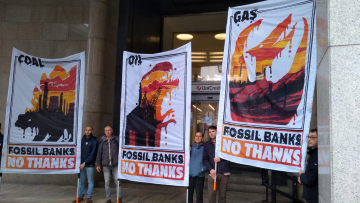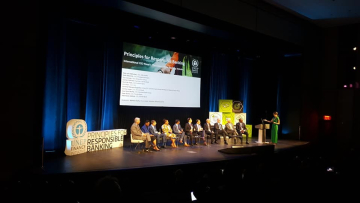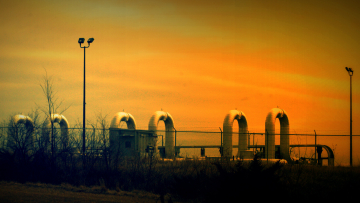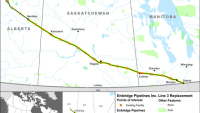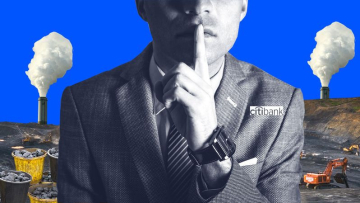
Project – On record
This profile is no longer actively maintained, with the information now possibly out of date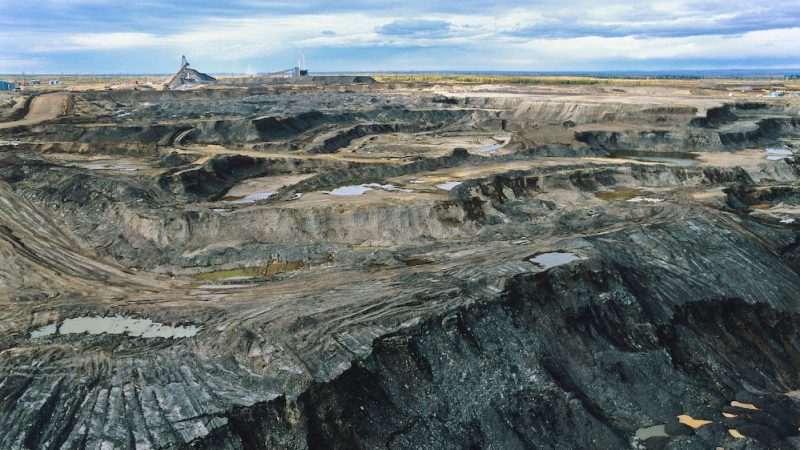
Project – On record
This profile is no longer actively maintained, with the information now possibly out of dateWhy this profile?
Enbridge's Line 3 Pipeline Replacement is a threat to the environment. It has expanded access to dirty tar sands oil and crosses important ecosystems, including forests and wetlands in Minnesota and the Great Lakes.
What must happen
| Sectors | Pipeline Transportation of Crude Oil |
| Location |
|
| Status |
Planning
Design
Agreement
Construction
Operation
Closure
Decommission
|
| Website | https://www.enbridge.com/Line3ReplacementProgram.aspx |
Enbridge’s Line 3 Replacement Pipeline is a tar sands oil pipeline that covers more than 1,030 miles (1,660 kilometres) from Hardisty in Canada’s Alberta province, to the US city of Superior, Wisconsin. With a larger diameter than the pipeline it replaced, L3RP is capable of transporting 844,000 barrels of crude oil per day. Completed in October 2021, it was the largest project Enbridge had ever worked on and cost a reported USD 8.2 billion. Called a “replacement”, L3RP in fact forged a new route through pristine wetlands, the headwaters of the Mississippi River, Minnesota’s lake country and some of the world’s largest and most productive wild rice beds. Enbridge has left the old Line 3 pipeline to corrode in the ground.
Impact on human rights and communities
The violation of Indigenous rights has been an inevitable consequence of the Line 3 Replacement Project. While the new pipeline does not cross any Indigenous reservations, it does jeopardise usufructuary rights agreements between bands of the Ojibwe people and the US government. These agreements concern the rights to hunt, fish, gather medicinal plants, harvest and cultivate wild rice, as well as the right to preserve sacred or culturally significant sites. The L3RP footprint crosses 180 such sites, including burial mounds, cemeteries and sacred sites. The Ojibwe people use Lake Minnewawa and Big Sandy Lake for fishing and consider both sacred, but both lakes are now under threat of oil spills. Similarly, 20 wild rice lakes are now at risk from L3RP spills. Minnesotan wild rice has traditionally held both economic and cultural importance for its localities.
Projects such as L3RP pose particular risks for Indigenous women. Environmental features that are intertwined with Indigenous women’s identity and culture are often impacted by fossil fuel construction work. Furthermore, temporary accommodation for male pipeline builders ("man camps") correlates with rises in abuse of Indigenous women, girls and two-spirit people.
Enbridge’s abandonment of the old Line 3 Pipeline guarantees an ongoing threat to American Indian reservations at Leech Lake and Fond du Lac. The abandoned pipeline crosses 300 miles of northern Minnesota in total, which leaves landowners at financial and ecological risk as the pipeline disintegrates.
More than 150 North American First Nations and Tribes signed the Treaty Alliance Against Tar Sands Expansion, opposing the use of the signatories’ Indigenous territories and coasts for new or expanded pipeline infrastructure projects that would facilitate the expansion of the tar sands.
Local drinking water supplies are jeopardised by L3RP, which crosses areas that are highly susceptible to groundwater contamination. It also crosses the Mississippi River, which provides drinking water to Minneapolis and several other cities, as well as the Great Lakes, which are home to approximately one fifth of the world’s fresh water. A 2017 Greenpeace report noted that oil spilled into bodies of water is difficult to fully clean up, which poses serious risks to human health and the environment. The potential leakage of diluted bitumen represents a particularly grave threat to water resources, especially because small leaks might go unnoticed by detection systems for months.
Increased militarisation accompanied the project’s construction. In January 2019, The Intercept reported that “law enforcement has engaged in a coordinated effort to identify potential anti-pipeline camps and monitor individual protesters, repeatedly turning for guidance to the North Dakota officials responsible for the militarised response at Standing Rock in 2016.” Construction resistance was subjected to heavy surveillance by both police and private security forces. The use of rubber bullets, tear gas, razor wire and water cannons in North Dakota is deeply troubling. The Trump Administration threatened pipeline protestors with 20-year jail sentences.
Impact on climate
The exacerbation of global heating is a major consequence of burning tar sands oil. Tar sands oil is 15% more carbon-intensive than conventional oil, due to the extra energy expended during the extraction, upgrading and refining processes. In 2012, climate scientist James Hansen explained that Canada’s tar sands contain twice the amount of carbon dioxide that humanity had so far emitted via our collective oil use. Enbridge’s new pipeline is wider than its predecessor and can transport approximately twice as much oil, indicating that the pipeline will accelerate the extraction of tar sands.
Impact on nature and environment
The potential for disastrous oil spills from this pipeline should not be underestimated. Enbridge’s chequered history of oil spills includes the largest inland oil spill in US history: In 2010, 20,082 barrels of diluted bitumen entered the Kalamazoo River under Enbridge’s watch. Furthermore, Enbridge and its joint ventures and subsidiaries caused an average of one “hazardous liquids incident” every 20 days between 2002 and 2018. Expanding the capacity of Line 3 has only increased the risk of such disasters in previously undisturbed ecosystems, from forests and wetlands, to delicate soils, aquifers, freshwater reserves and wild rice beds. According to Enbridge’s Environmental Impact Statement, the new pipeline route impacts upon 389 acres of wild rice in 17 different wild rice water bodies. This rice is a culturally significant staple of the Anishinaabe diet, which would make an oil spill in these areas particularly devastating.
Soil and groundwater contamination is likely to become a legacy of the Line 3 project. For example, toxic waste water is a product of the tar sands oil extraction process. This water is placed in storage ponds or underground wells, which pose a contamination risk to groundwater. Meanwhile, critics of Enbridge’s plan to abandon the old Line 3 pipeline also highlight soil and groundwater contamination. As the pipeline corrodes in the ground, residual oil, lubricants, treatment chemicals and pipeline coatings will escape.
The drainage of important wetlands could be a consequence of leaving the old Line 3 pipeline to disintegrate in the ground. This is because the pipeline may become a water conduit, which could drain and damage wetlands, as well as potentially flood farmland with contaminated water.
Increasing strains upon local water supplies is an inevitable consequence of the pipeline. In January 2021, for example, the breach of an aquifer during construction caused 24 million gallons of groundwater to escape. Minnesota’s Department of Natural Resources (DNR) fined Enbridge USD 3.32 million for the breach, citing the loss of resources and resulting threat to nearby wetlands and lakes. The DNR also said Enbridge failed to notify them at the time of the incident. More generally, tar sands oil extraction and refinement requires triple the amount of fresh water in comparison to conventional oil.
Enbridge constructed the Line 3 Pipeline Replacement using general corporate finance, rather than project-specific loans.
In October 2017, Wells Fargo led a syndicate of more than a dozen banks in renewing a USD 1.48 billion credit facility for Enbridge.
In its 2019 annual report, Enbridge announced it had terminated “certain” Canadian and US credit facilities that year, while securing a three-year credit facility with a syndicate of Japanese banks worth CAD 641 million, as well as a CAD 500 million five-year credit facility from an Asian bank. In November 2019, Barclays, Credit Suisse, Deutsche Bank and SMBC were involved in a USD 2 billion total bond issuance for Enbridge.
Toronto Dominion Bank was the lead agent on a CAD 2.97 billion loan to Enbridge that matured in March 2021. In February 2020, Mizuho Bank led on a USD 1 billion loan to Enbridge that matured in February 2022.
The financiers listed below have either provided credit facilities or underwritten bond issuances for Enbridge, thereby supporting L3RP. As of November 2020, Enbridge had access to credit facilities worth USD 12.87 billion.
Applicable norms and standards
PBS NewsHour: The next big oil pipeline battle is brewing over Line 3 in Minnesota
#StopLine3 National Day of Action
What is Line 3?
Stop Enbridge's Minnesota Tar Sands Pipeline | Sierra Club Video
Line 3 Pipeline: Largest Inland Oil Spill in US History
2021
2021-10-01 00:00:00 | Line 3 Pipeline Replacement Project complete
The Line 3 Pipeline Replacement became operational today, transporting Canadian tar sands oil along a new route through northern Minnesota. The pipeline’s manager Enbridge now needs to address the construction mess it has left behind.
2020
2020-12-01 00:00:00 | Construction on Line 3 replacement begins
Having obtained a construction stormwater permit from the Minnesota Pollution Control Agency yesterday, Enbridge has begun construction on the Line 3 Pipeline Replacement. The independent Public Utilities Commission had been asked by the Red Lake and White Earth bands of Chippewa to rescind its approval of the project pending ongoing litigation, but this was rejected.
2020-11-12 00:00:00 | Minnesota Pollution Control Agency approves Line 3 permits
The Minnesota Pollution Control Agency (MPCA) and the Department of Natural Resources have approved a number of key permits for L3RP, including those for water crossing, capped-air emissions and wastewater. This is expected to trigger the approval of remaining federal permits by the US Army Corps of Engineers. The approval of the final remaining construction permit – for stormwater – is expected within one month. Construction will likely begin immediately, despite several ongoing lawsuits that are attempting to prevent it.
2020-10-14 00:00:00 | Enbridge completes Line 3’s North Dakota stretch
Enbridge has announced the completion of a small, 12-mile section of its Line 3 crude oil pipeline replacement project in North Dakota. This leaves only the Minnesota stretch to be built, which is currently embroiled in legal challenges by state officials and others.
2020-02-03 00:00:00 | Minnesota utility regulators grant key Line 3 approvals
Minnesota’s Public Utilities Commission (PUC) has voted three to one on three key approvals for the Line 3 Pipeline Replacement Project: a revised environmental review, a certificate of need and a route permit. The PUC originally voted to approve the controversial project in June 2018.
2019
2019-06-03 00:00:00 | Court rules against Enbridge Line 3
The Minnesota State Court of Appeals has ruled that the Line 3 Pipeline Replacement’s environmental assessment is inadequate. This ruling is a reversal of the Minnesota Public Utilities Commission’s approval of the L3RP environmental impact statement. The appellate court found the Commission’s approval to be mistaken and Enbridge’s assessment too vague in regards to potential Lake Superior oil spills.
2019-05-01 00:00:00 | Canadian segment of L3RP complete
Enbridges’ Line 3 Pipeline Replacement Project has stepped closer to completion with the announcement that the Canadian portion, which cost CAD 5.3 billion, has been constructed.
2018
2018-12-21 00:00:00 | Dayton appeals L3RP approval
Minnesota’s Governor Mark Dayton has appealed a decision regarding the Line 3 Pipeline made by the state’s Public Utilities Commission (PUC). The Minnesota Department of Commerce claims the PUC’s approval of the oil pipeline replacement was not adequately introduced or evaluated; the project’s long-range oil demand forecasts have been called into question by Dayon’s administration.
2018-06-28 00:00:00 | PUC approves L3RP certificate of need and preferred route
Minnesota’s Public Utilities Commission (PUC) unanimously granted Enbridge’s Line 3 replacement project its certificate of need today. A PUC majority also voted in favour of the new pipeline’s proposed route, which avoids Indigenous reservations but crosses untouched landscapes and Ojibwe treaty lands.
2016
2016-11-29 00:00:00 | Canadian federal government approves of L3RP
Today the Canadian federal government approved the construction of Enbridge’s Line 3 Pipeline project. Construction is slated to commence in Canada in mid-2017.
2016-04-25 00:00:00 | NEB recommends L3RP for approval
Canada’s National Energy Board has ruled in favour of the Line 3 Pipeline Replacement Project, after deciding it is in the country’s public interest. The NEB will now recommend that the federal Governor in Council approves the project.
2014
2014-11-06 00:00:00 | Enbridge files L3RP regulatory application with NEB
Calgary’s Enbridge pipeline company has applied to Canada’s National Energy Board for regulatory approval of the Line 3 Pipeline Replacement Project.

